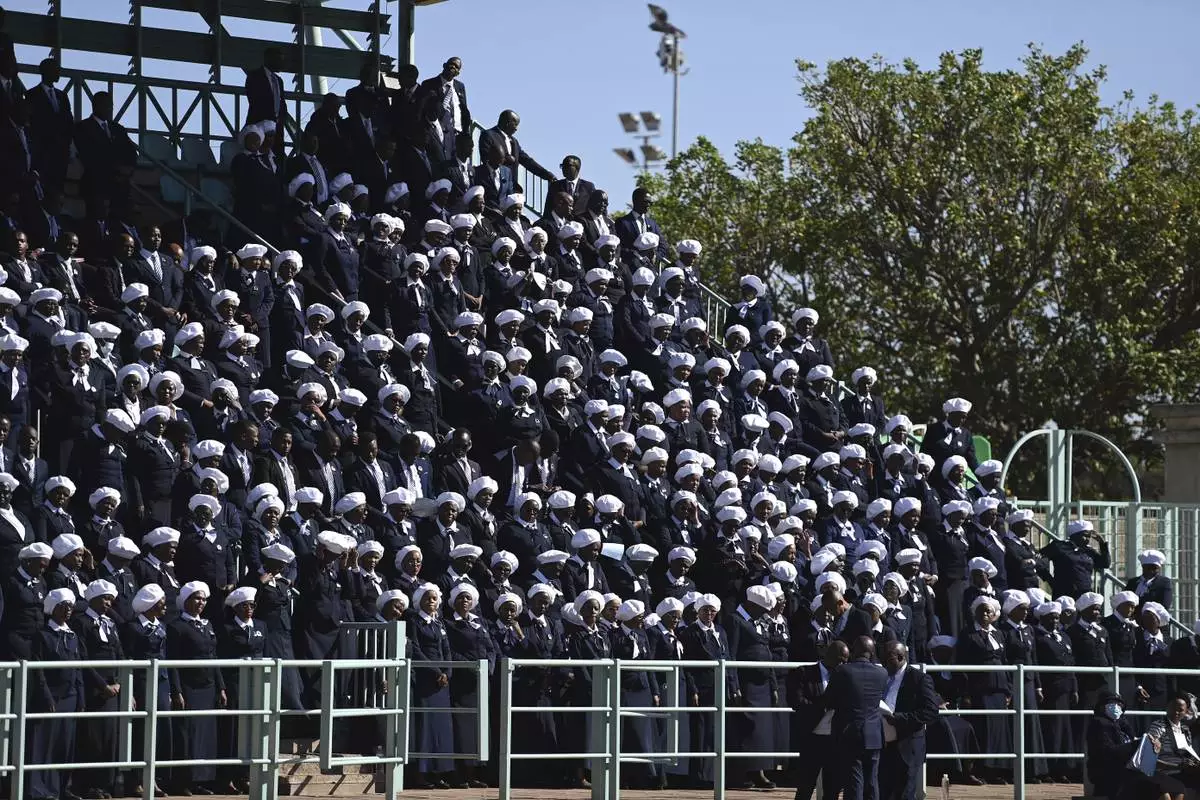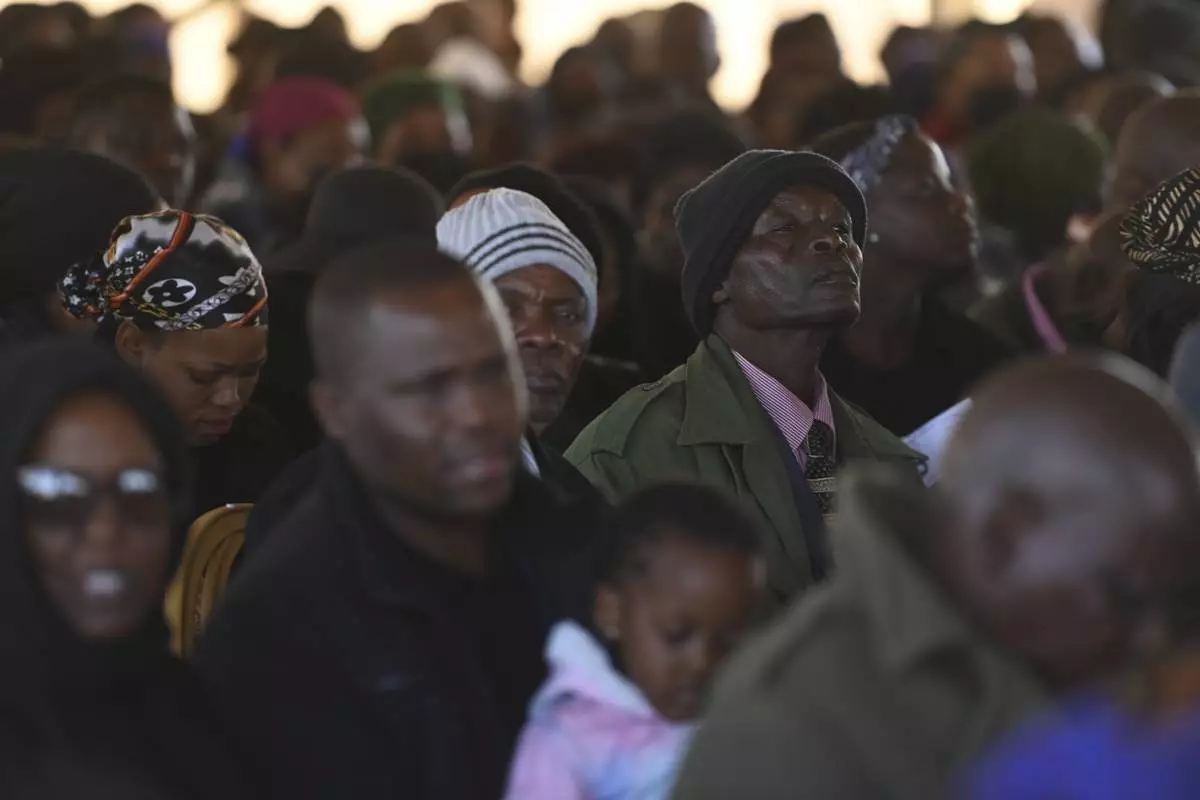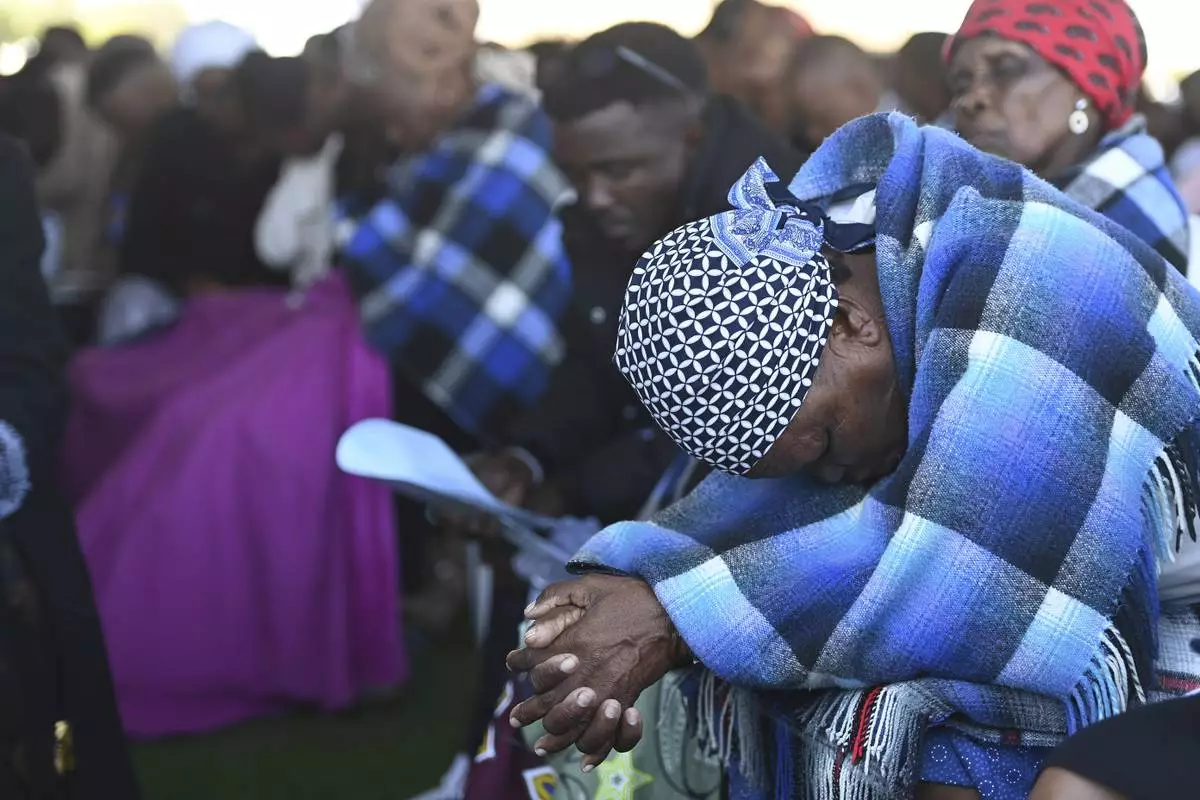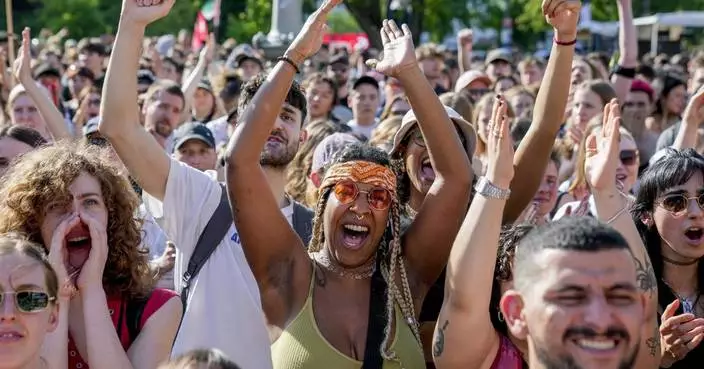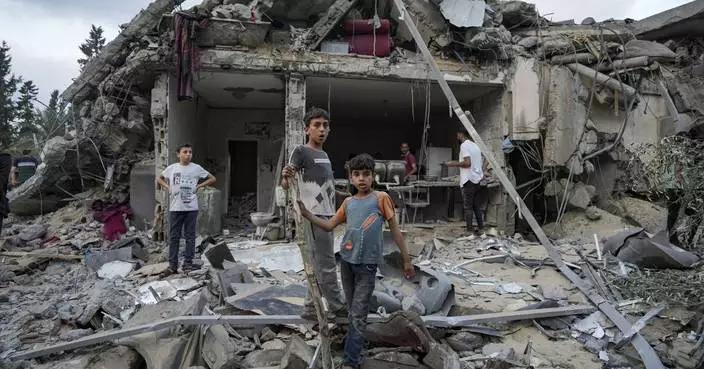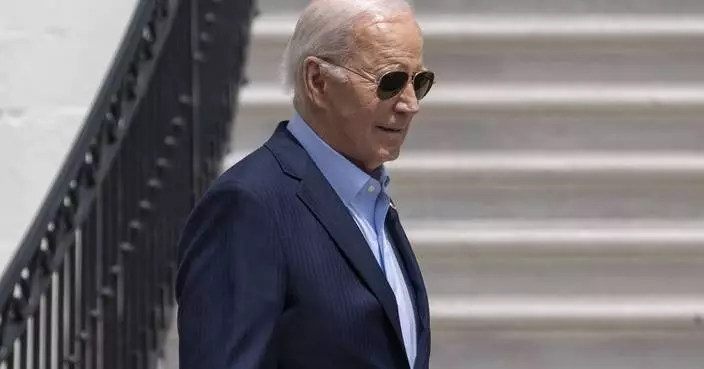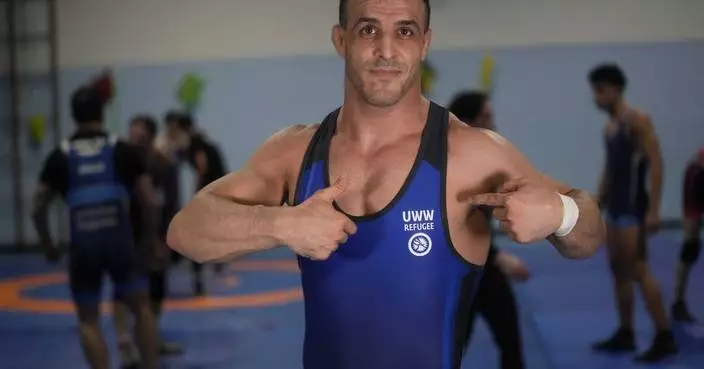The world must do more to help millions of refugees across sub-Saharan Africa, which hosts more than a quarter of the world's refugees, the United Nations said Tuesday.

U.N. refugee chief Filippo Grandi, center-right, visits a hospital as he tours Dadaab refugee camp, which currently hosts over 230,000 inhabitants, in northern Kenya Tuesday, Dec. 19, 2017.(AP Photo/Ben Curtis)
U.N. refugee chief Filippo Grandi spoke to reporters while visiting what until recently was the world's largest refugee camp, Dadaab, in Kenya.
"You know, it is very difficult to fund programs in Africa. I am not ashamed to say it," Grandi said, adding that he fights "all the time" for more aid. Some of the world's poorest countries, including Uganda and Ethiopia, host hundreds of thousands of refugees from South Sudan and elsewhere.
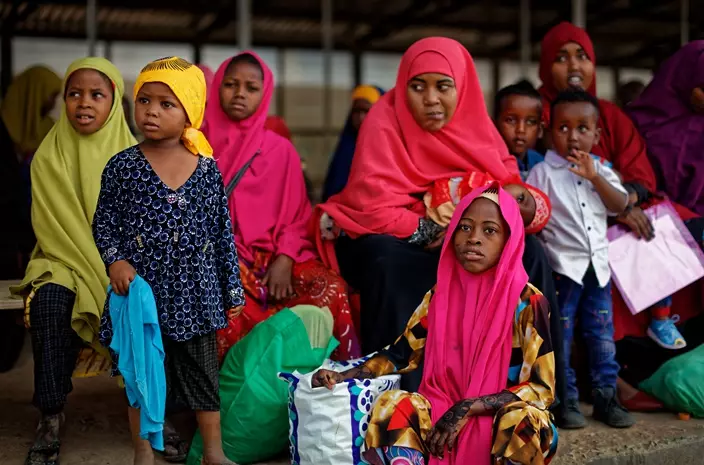
Some of around 20 Somali refugee families wait to be flown to Kismayo in Somalia, under a voluntary repatriation programme, at the airstrip of Dadaab refugee camp, which currently hosts over 230,000 inhabitants, in northern Kenya Tuesday, Dec. 19, 2017. (AP Photo/Ben Curtis)
Kenya's government wants Dadaab, which hosts over 230,000 inhabitants, shut down, but the U.N. is urging patience and says all repatriations must be voluntary. A Kenyan court ruled in February that the government must not close Dadaab to refugees.
Some Kenyan officials have argued that the sprawling camp near the border with Somalia has been used as a recruiting ground for the Islamic extremist group al-Shabab and a base for launching attacks inside Kenya. But Kenyan officials have not provided conclusive proof of that.

Ahmed Hussen, left, Canada's Minister of Immigration, Refugees & Citizenship who was born and raised in Somalia and immigrated to Canada in 1993, speaks to a Somali refugee family who fled from Kismayo six years ago, and translates the conversation to U.N. refugee chief Filippo Grandi, right. (AP Photo/Ben Curtis)
The U.N. says more than 32,000 Somalis have returned home this year from camps in Kenya under a voluntary repatriation program. Human rights groups have raised concerns about refugees being pressured to leave, either by Kenyan authorities or by the cut in rations by 30 percent in October.
While touring Dadaab, Grandi spoke to about 20 families of Somali refugees who are set to return home. The U.N. refugee agency says about 19,000 refugees in Dadaab are "in the pipeline" to return to Somalia.
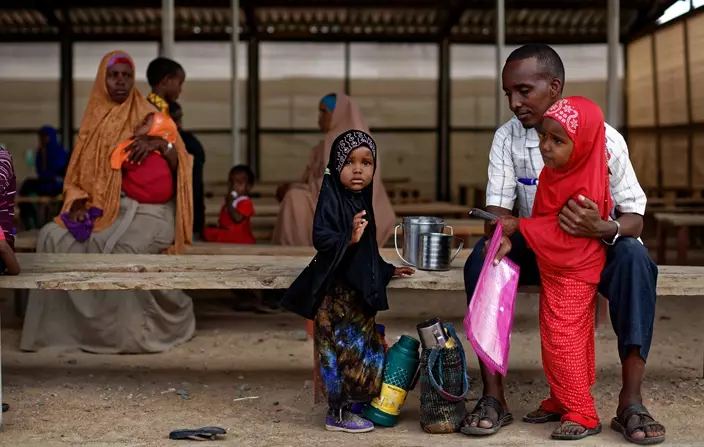
Some of around 20 Somali refugee families wait to be flown to Kismayo in Somalia, under a voluntary repatriation programme, at the airstrip of Dadaab refugee camp, which currently hosts over 230,000 inhabitants, in northern Kenya Tuesday, Dec. 19, 2017.(AP Photo/Ben Curtis)
Kenya was the last leg of a trip during which Grandi also visited Djibouti and Somalia. He said he met some former refugees who have happily settled in Somalia and others who face challenges and need help. Returning home is a "difficult, brave choice" as Somalia remains fragile, he said on Twitter.
Some parts of Somalia are witnessing drought conditions, and the al-Qaida-linked al-Shabab frequently carries out deadly attacks, especially in the capital, Mogadishu. A truck bombing in October killed 512 people.

Some of around 20 Somali refugee families wait to be flown to Kismayo in Somalia, under a voluntary repatriation programme, at the airstrip of Dadaab refugee camp, which currently hosts over 230,000 inhabitants, in northern Kenya Tuesday, Dec. 19, 2017. (AP Photo/Ben Curtis)
"We will need to be strong and continue to help Somalia be strong, so that also conditions will be in place better for people to come back," Grandi said. "At the moment, in many areas there is a lot of insecurity, there is drought, there is other difficulties, lack of infrastructure."
Many refugees he spoke to said they would not return home if the situation does not improve, he said.
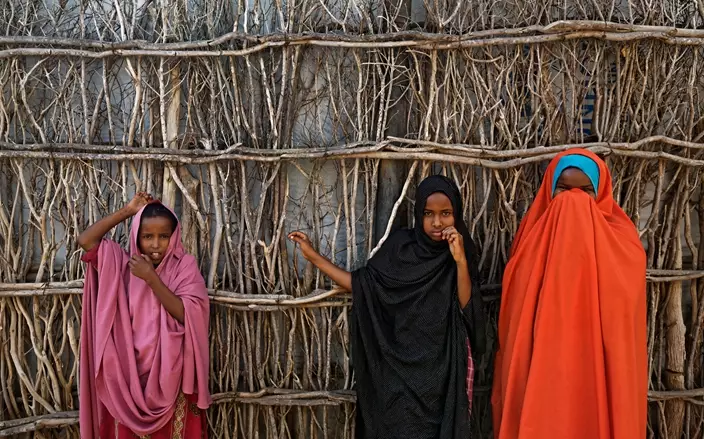
Somali refugee girls stand by the fence surrounding their hut at Dadaab refugee camp, which currently hosts over 230,000 inhabitants, in northern Kenya Tuesday, Dec. 19, 2017. (AP Photo/Ben Curtis)
The first settlement in Dadaab was established in 1991, when refugees fleeing conflict in Somalia started to cross the border into Kenya, according to the U.N. refugee agency.

Somali refugee girls run to see the commotion during a visit of U.N. refugee chief Filippo Grandi, at Dadaab refugee camp, which currently hosts over 230,000 inhabitants, in northern Kenya Tuesday, Dec. 19, 2017. (AP Photo/Ben Curtis)
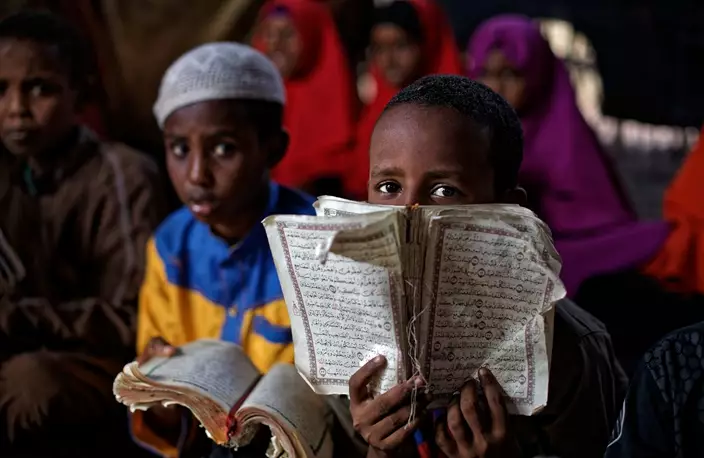
Somali refugee boys recite the Koran at a Madrassa, or Islamic religious school, at Dadaab refugee camp, which currently hosts over 230,000 inhabitants, in northern Kenya Tuesday, Dec. 19, 2017.(AP Photo/Ben Curtis)
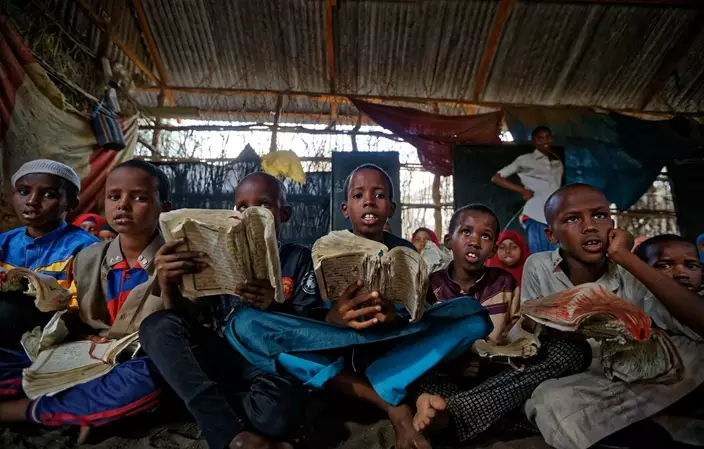
Somali refugee boys recite the Koran at a Madrassa, or Islamic religious school, at Dadaab refugee camp, which currently hosts over 230,000 inhabitants, in northern Kenya Tuesday, Dec. 19, 2017. (AP Photo/Ben Curtis)
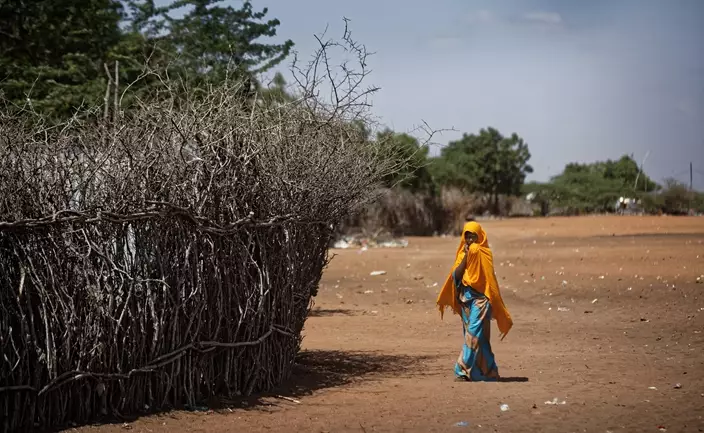
A Somali refugee girl walks past the fence surrounding a hut at Dadaab refugee camp, which currently hosts over 230,000 inhabitants, in northern Kenya Tuesday, Dec. 19, 2017. (AP Photo/Ben Curtis)



